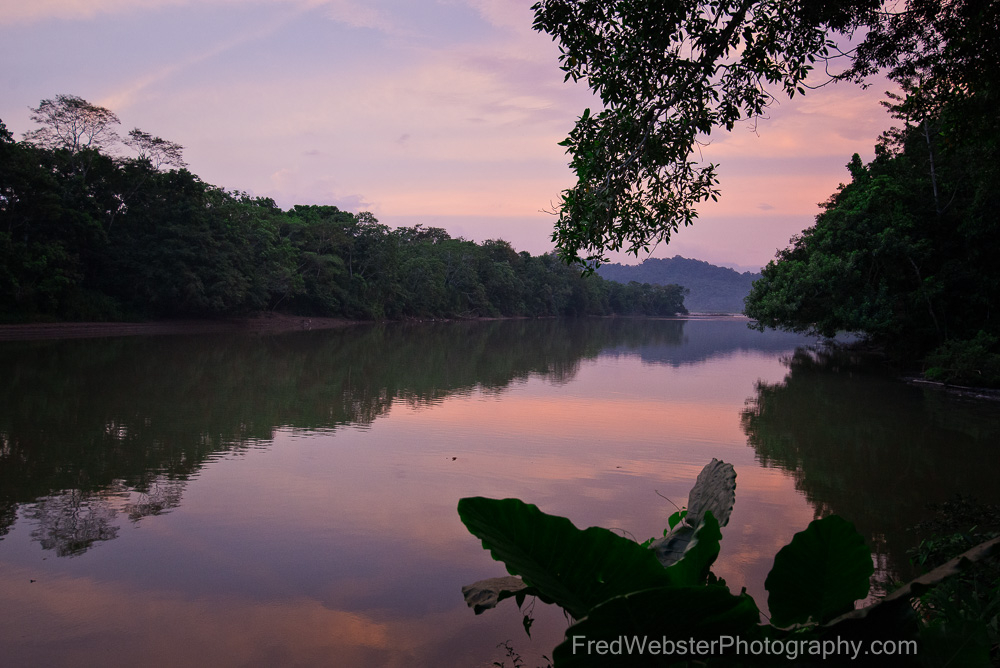A short journey travelling over the dramatic and breathless Papallacta Pass from Otavalo takes us into the Amazon Basin. To break up the journey we stopped at the Papallacta Hot Springs which is noted as the nicest in Ecuador. We soaked in the soothing water under the Antisana Volcano then indulging in a restorative coffee made from rich, deep Ecuadorian coffee beans to give us a kick for the remaining drive around the flanks of the volcano. Descending into the Amazon Basin the vegetation changed and it became significantly dryer as our arrival was ahead of the heavy rains that come in April through June. The forest was cut away in many areasto make room for the numerous banana plantations and as we approached the town of Tena we saw the footprint of oil.
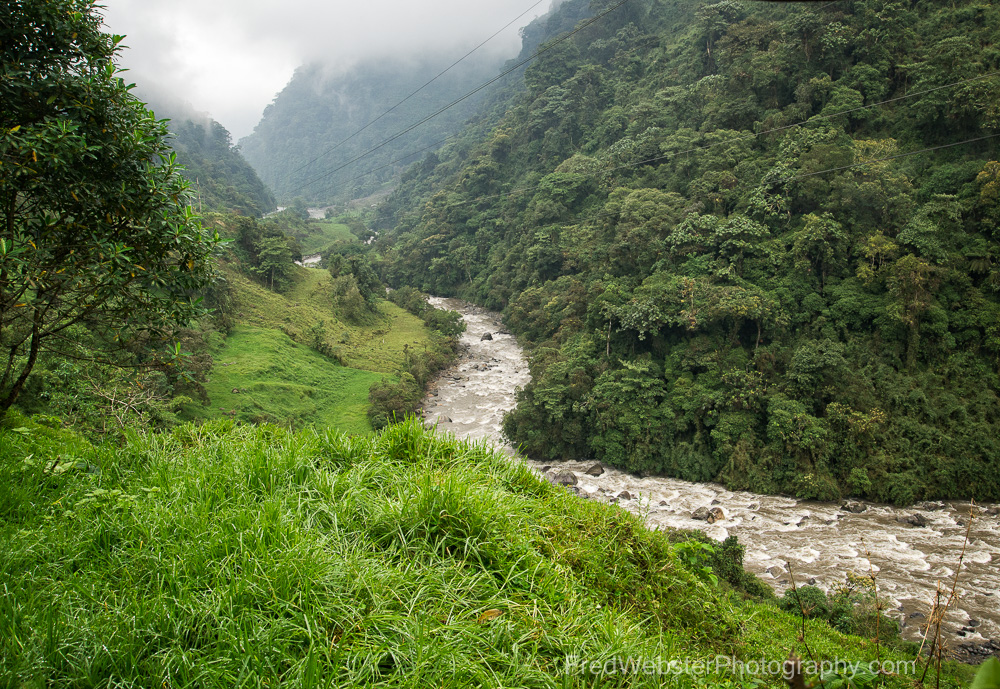
Tena, located on the Napo River, is a town of surprising prosperity. Located well off the Pan American Highway in what, to me, is a backwater locale, the town thrives with commerce. Oil has brought wealth to Tena when it was discovered in 2015. But the industry is challenged by ecotourism. It is a popular launch point for kayaking and rafting as well as a jumping-off point for backpackers headed into the rainforest. The surrounding indigenous communities are also bases for many volunteers working for reforestation projects.
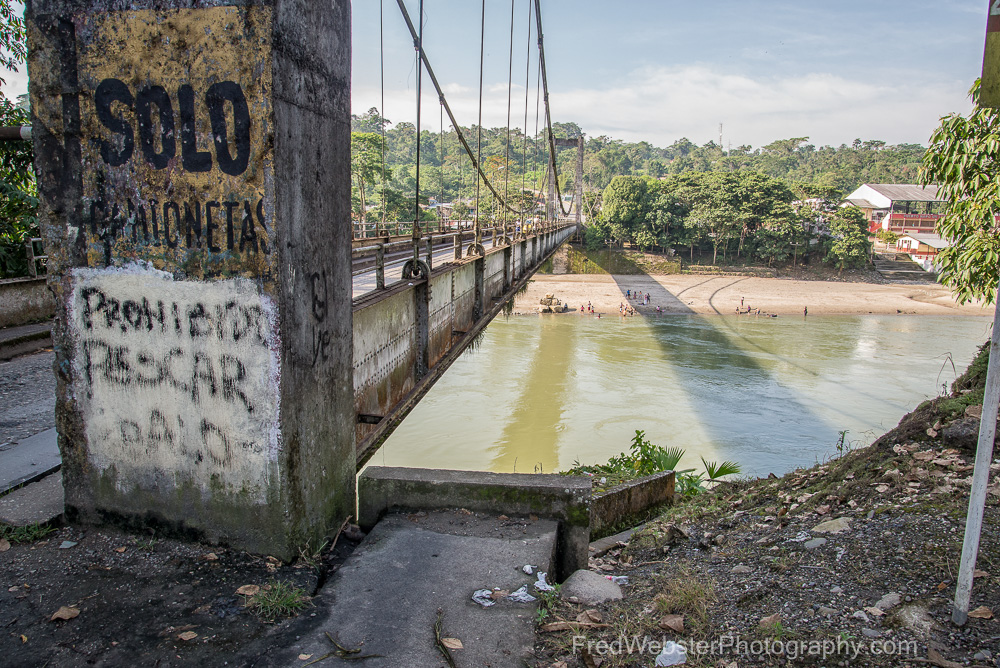
We passed through the town and headed downstream along the road to our pickup point for the Liana Lodge. The road started as a newly built, wide and scenic avenue which came to an abrupt end and became a narrow dirt road with potholes so deep they could have been created by motor shells. As the jungle became thicker and large trees loomed overhead we were flagged into a driveway and were told to grab out gear, leaving most as we had paired down to a 2 night necessity to carry in to a waiting motorized dugout canoe for the boat ride to Liana.
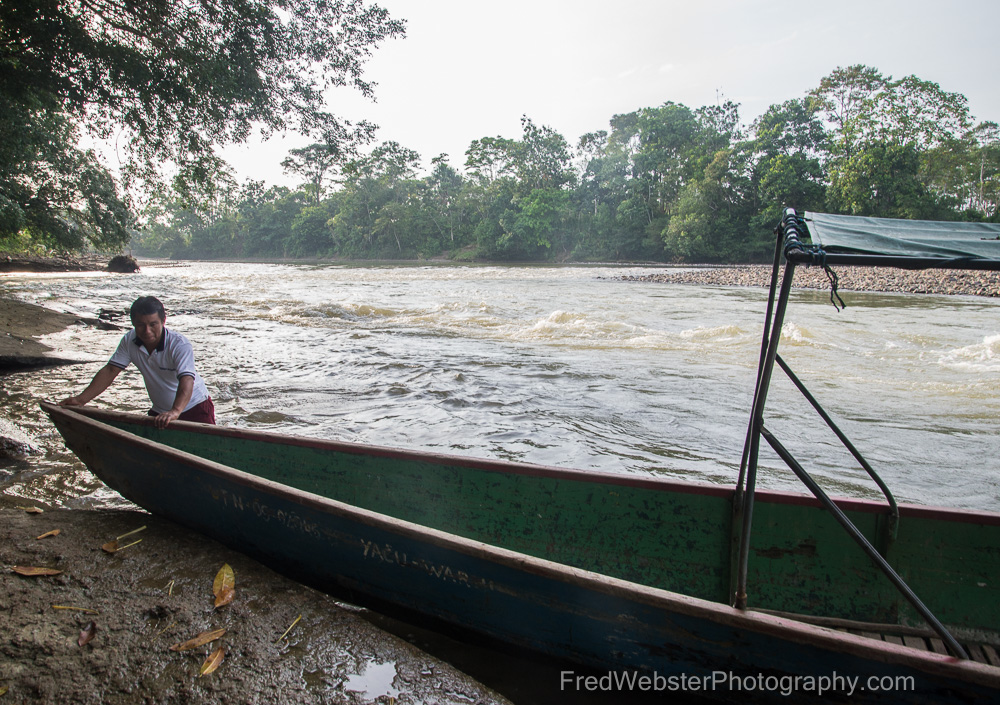
There was a steep walk down the embankment to the very long, narrow canoe beached on the sandy bank of the Rio Arajuno, a tributary of the Napo. I was told to load in along with the others and we pushed off into class 2 river rapids under power of a 100 HP outboard motor. A quick 45 minute ride into the jungle brought us along shores lined with unfamiliar trees and vegetation, exotic birds and even monkeys hanging in the trees and allowed us to be witness to indigenous village life on the river. Photography here started to become target rich.
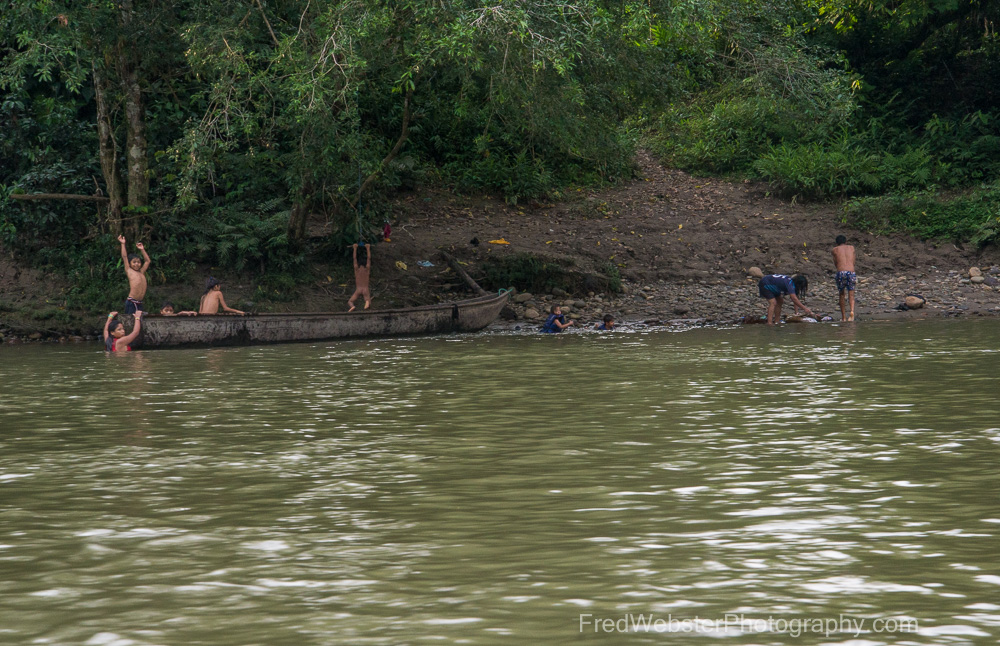
We received a warm welcome from the Kichwa proprietors at Liana lodge as we entered the large open air common and dining area. After a refreshing fruit cocktail into which we were offered a shot of Chicha, the traditional fermented beverage, we were assigned our accommodation which was a rather spacious thatched roof duplex with private bath, balcony and hammock. No electricity or internet though. This is a true wilderness experience.
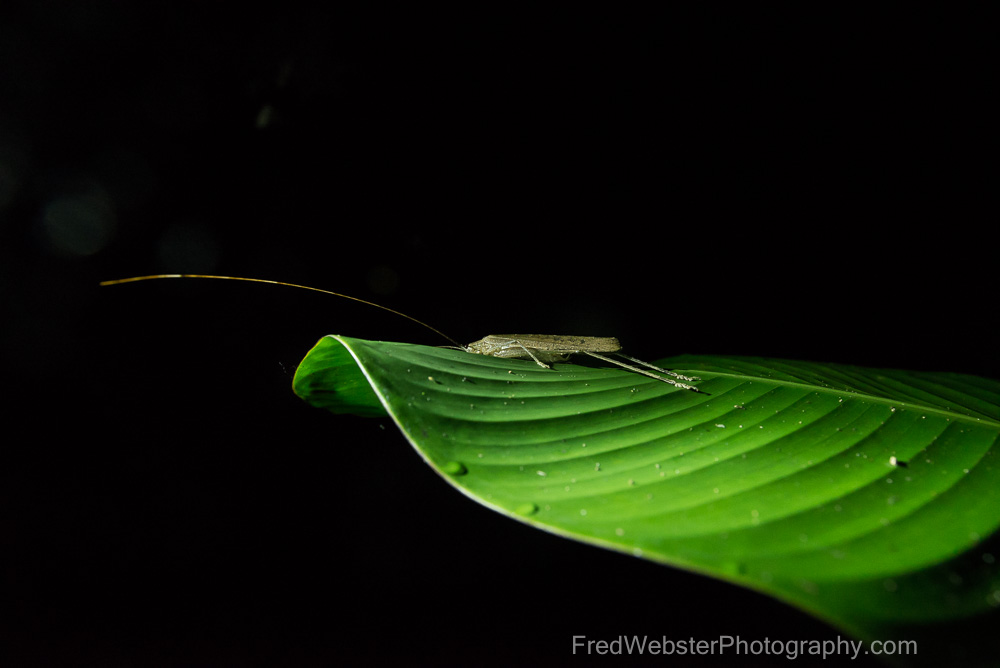
Activities include Rainforest hikes, guided tours of the animal rescue centre, a visit to a Kichwa family village, rafting if the canoe ride in wasn’t enough and Piranha fishing. The night hike through the forest was my favourite and shouldn’t be missed. It is not a mosquito infested misery as you might imagine. It was a wonderful, rich and enlightening adventure into a world of sound and biodiversity that we could never experience the likes of in a first world country. Our Kichwa guide took us upstream by canoe to a drop-off point for the hike back through the jungle. With headlamps lit, listening to the night sounds of the jungle inhabitants we ventured along a hiking trail where he pointed out the nightlife activity not to be found in the day. Without our guide I would have missed all of it but with his skilled eye and local understanding he was able to find and point out the nocturnal inhabitants of the jungle that are still being newly discovered. It was like walking through a National Geographic nature special.
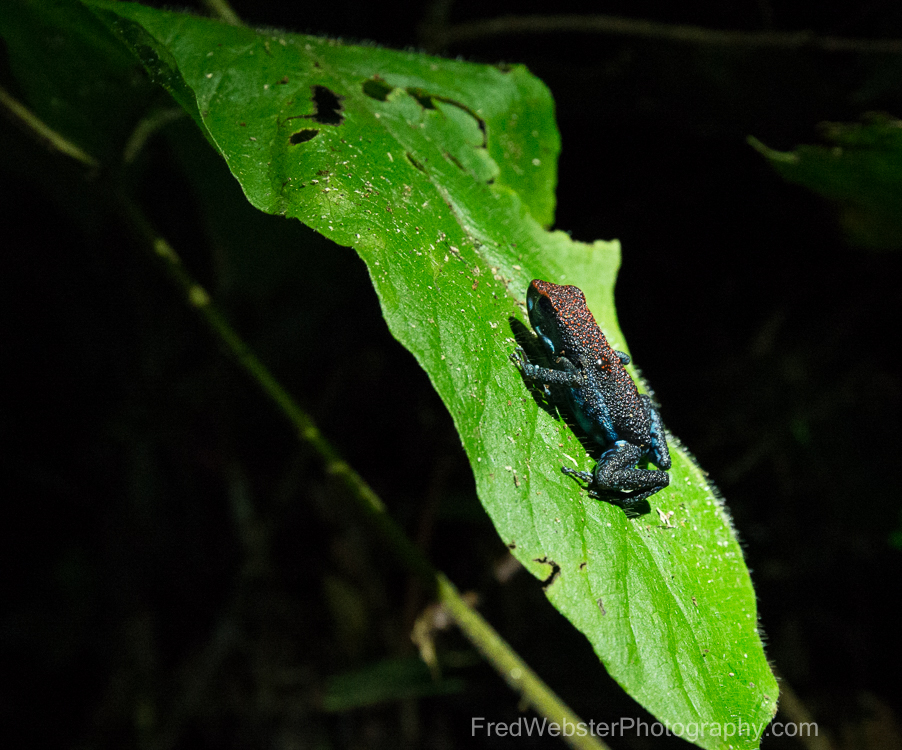
The following day we set off to the animal rescue centre to see some jungle animals closeup. Remember that I mentioned how much drier it was getting as we descended into the amazon basin. That all changed. On the hike over to the centre it began to rain in a way that would float Noah’s Ark. It was like walking in a shower stall with the water full on for a couple of hours. Even with high end rain gear on I was getting wet and it cost me my cell phone with all my photos when I discovered that I managed to leave the zipper pocket open just enough to let water run in and soak the phone. Rainforest lesson: waterproof your electronics.

The rains let up in the afternoon for a visit to a Kichwa village. This is where you can try your skills with a blowgun, learn about traditional uses of native plants and celebrate with Chicha which is guaranteed to put hair on your chest. I think you can also apply it topically to remove said hair.
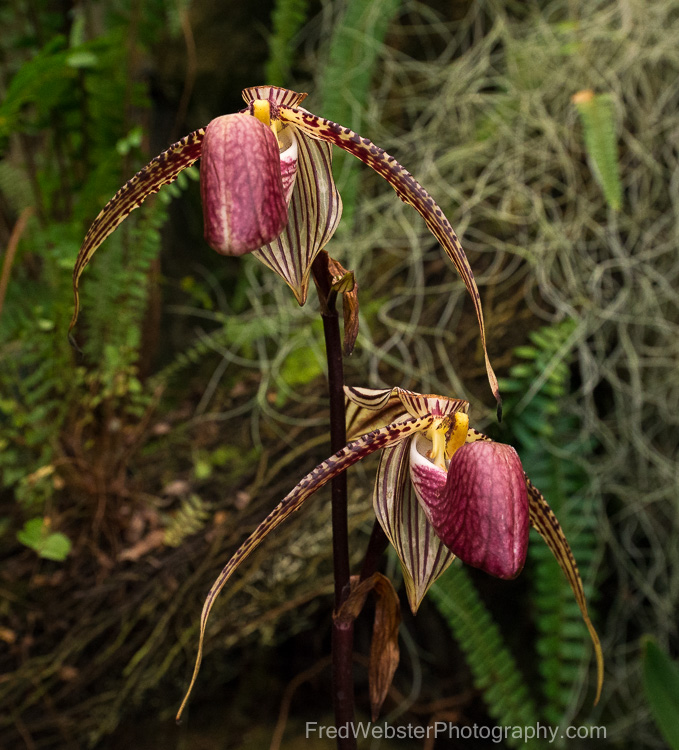
What to bring: Pack light with at least 2 changes of quick dry hiking clothing. Three to 4 changes of underwear and socks. Wide brimmed hat for sun and rain. This is not a formal lodge. It is hot and humid but a light sweater for the evening. Good rain gear is necessary. Waterproof hiking boots are recommended but you will be issued rubber “Wellies” upon arrival. Backpack, bug repellent , headlamp, sunblock, water bottle, camera, binoculars, sunglasses. Cash for tipping the lodge and guides.

